IMMIGRATION: The
American Sign Language (ASL) sign for "immigration / immigrant"
There are variations for the sign IMMIGRATION / IMMIGRANT:
IMMIGRATION-[lines-on-face-version] / migrant / immigrant:
Using a wavy up and down movement, move your hand in front of your face from
the left to the right. (If you are left handed, do a mirror image.)
Memory aid: Think of the "blue wavy lines" that are printed across the
photos on certain immigrant ID (identification) Cards.
You don't "have to" add the "person" sign to the "immigrant" sign, but if
you need to distinguish between "immigration" as in the "Immigration office" and an
actual person, you can add the "PERSON" sign.
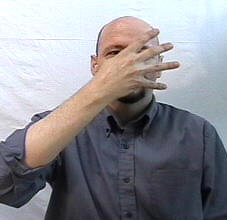
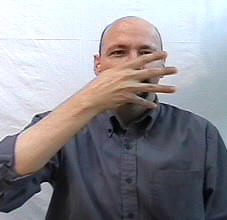
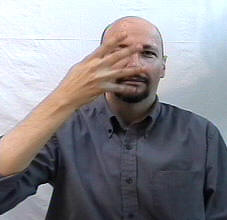
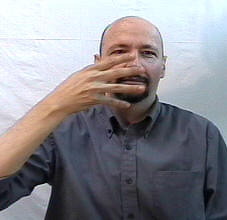
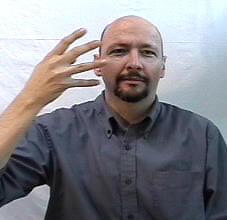
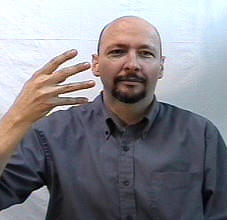
Immigrant-[ADMITTANCE-enter-version]:
Note: There are those who may criticize the current immigrant sign (the one that uses an upright four or five dominant hand and a flat non-dominant hand) and claim that it looks as if someone were sneaking into the country.
My opinion is that version of the immigration sign looks nothing whatsoever like someone sneaking into a country and instead looks like people standing upright and walking in an organized fashion through an entry way. The hand above is not iconic of a fence nor a wall (both of which would be upright not flat) but rather of a ceiling or a flat surface above one's head.
You might claim that, "Well some people feel that..."
The problem with the word (or sign) "some" when used in the phrase "some people" feel this way or that way or think this way or that way is that people tend to think of it as meaning "half" when the reality is that "some" can vary from two people to every person on the planet.
Thus claiming that "some" people feel such and such a way can give an impression that one side of an argument is more powerful than it really is.
If you spend enough time in an organization you are likely to associate with a person who will announce that "some people" felt a certain way. (Even though you know it was only three people who were only a fraction of the overall organization) -- but the person will use "some people..." or "a number of people..." in order to use ambiguity to lend undeserved weight to their argument.
Sure, I do think that it is good to be aware that not everyone agrees on any particular sign for "immigration" and that some people don't like the sign.
I would ask you to keep in mind though that "some" doesn't equal "half."
Several decades of observation lead me to believe that the vast majority of Deaf people have no problem with the current, generally accepted "immigrant / immigration" sign (including Deaf immigrants) and do not consider it to be negative at all but rather consider it depictive of passing from one location to another via a specific location.
You can put me firmly in the camp of those people who see the sign as an appropriate / respectful sign -- when done with neutral facial expression and not inflected in any negative way (such as hunching of the shoulders and looking furtively side to side before doing the sign).
The sign typically carries a connotation (or implied meaning) of "official" entrance and is often used for situations where admittance is regulated or managed in an official way -- such as admittance or official entrance into an event or a venue at which you need to have a ticket or enter through a specific gate or doorway in order to get in.
"Immigrant or immigration" is simply one of the various respectful or appropriate meanings derived by a combination of that sign, the context in which you sign it, and the absence of modifying inflections.
A version for MIGRANT is:
Notes:
See: TRAVEL
*
Want to help support ASL University? It's easy:
* Another way to help is to buy something from Dr. Bill's "Bookstore."
* Want even more ASL resources? Visit the "ASL Training Center!" (Subscription
Extension of ASLU)
* Also check out Dr. Bill's channel:
www.youtube.com/billvicars
You can learn American Sign Language (ASL) online at American Sign Language University ™
ASL resources by Lifeprint.com © Dr. William Vicars